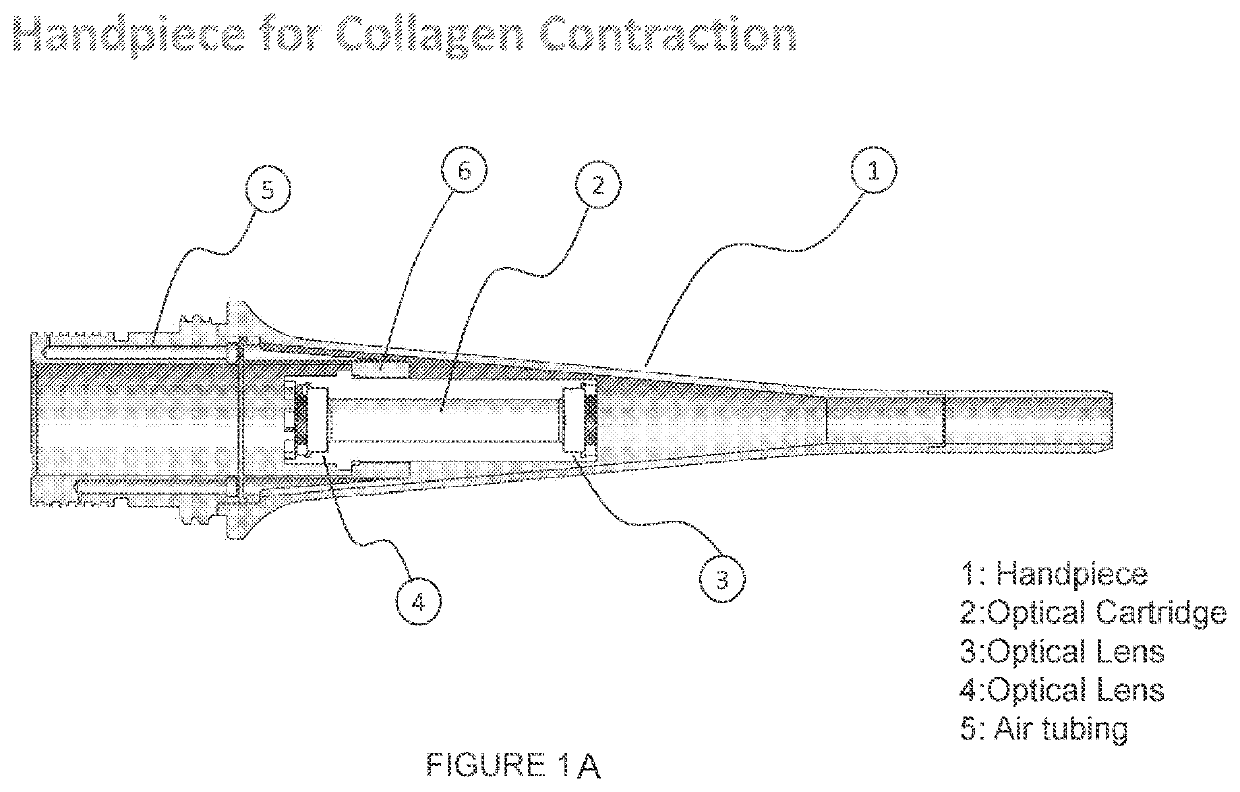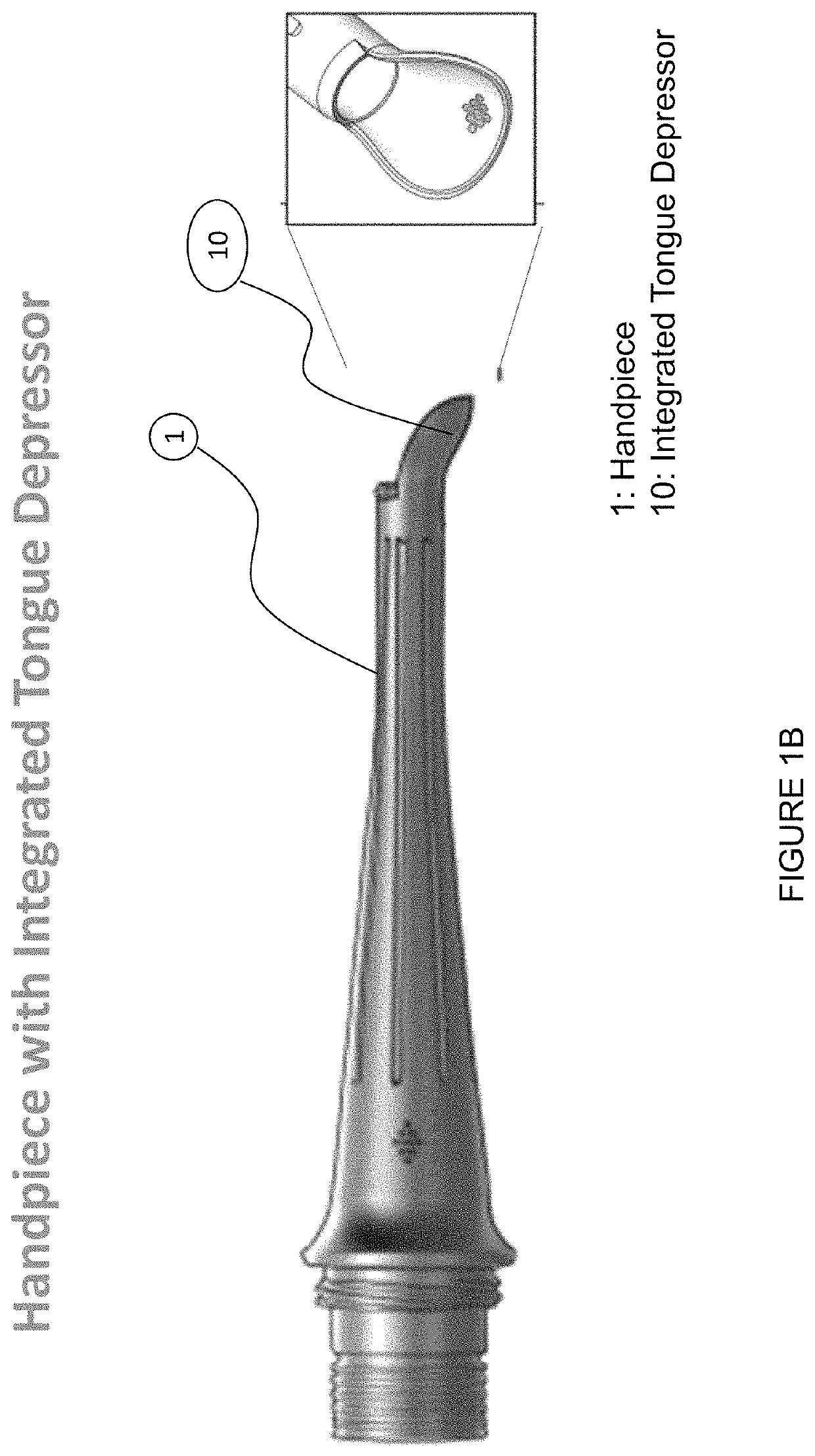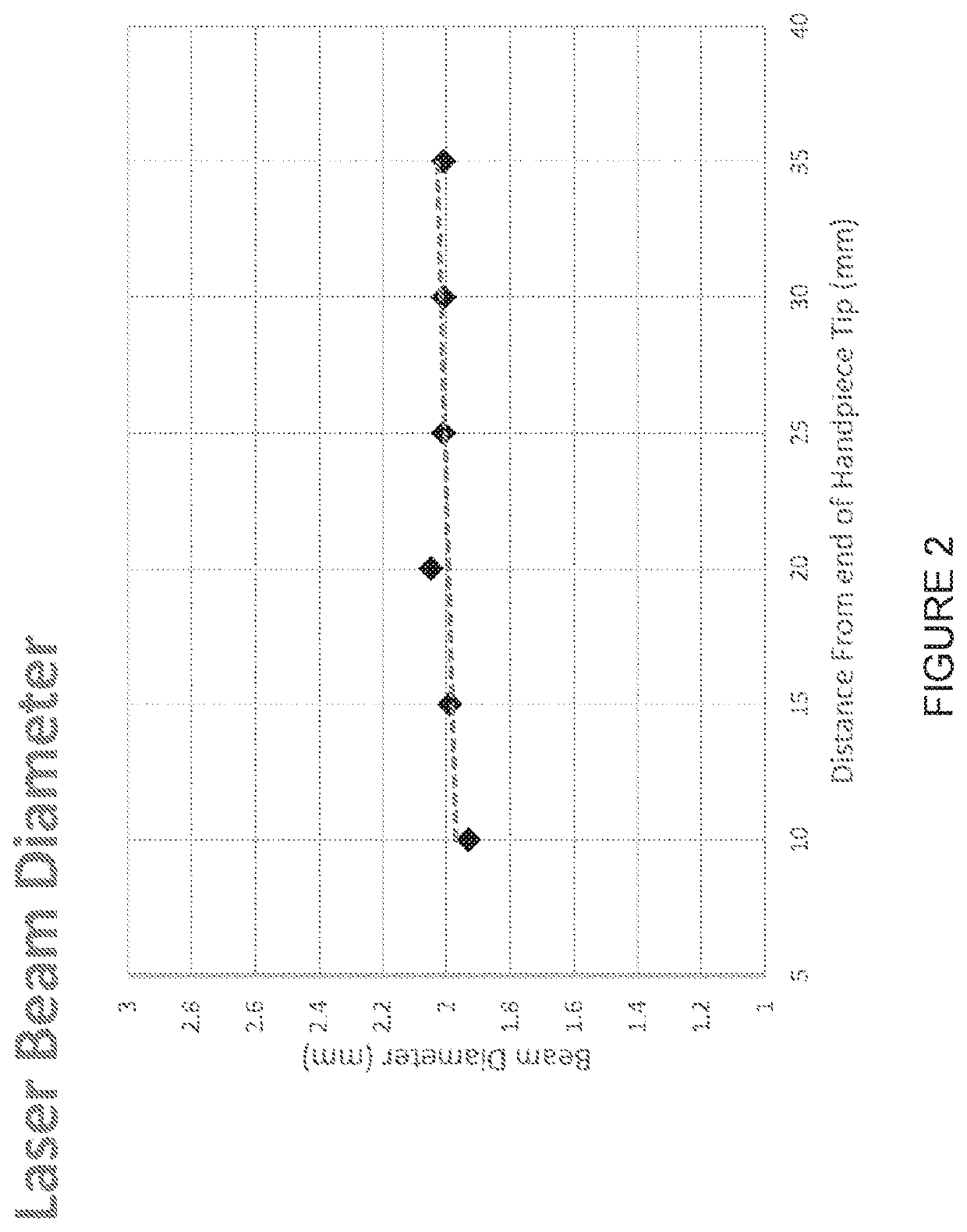System and method for laser based treatment of soft tissue
a laser based treatment and soft tissue technology, applied in the field of soft tissue treatment, can solve the problems of heart attack and stroke, sleep deprivation, and very common snoring, and achieve the effects of improving the stiffness of the oral mucosa, reducing the absorption coefficient, and improving the quality of li
- Summary
- Abstract
- Description
- Claims
- Application Information
AI Technical Summary
Benefits of technology
Problems solved by technology
Method used
Image
Examples
Embodiment Construction
[0031]Various embodiments of the present invention are directed to an improved laser treatment device that overcomes the shortcomings of conventional soft tissue treatment devices, e.g., with improved energy delivery, treatment time and number of treatments required to achieve effective therapeutic effect and without damaging the tissue or causing pain to the patient. The device can include a hand piece that delivers (i) laser pulses that heats the tissue without damage to therapeutically effective contraction, (ii) a laser beam having a long working range (defined below), and (iii) coolant (air, water, etc.) to an oral treatment region. The oral treatment area may include, for example: soft palate, uvula, palatine tonsils and the back of tongue; however, these are non-limiting examples. In general, any suitable tissue region can be treated.
[0032]For some applications, a CO2 laser source operating at a wavelength in a range of 9-11 μm (e.g., 9.3 μm, 10.6 μm), is desirable for such t...
PUM
 Login to View More
Login to View More Abstract
Description
Claims
Application Information
 Login to View More
Login to View More - R&D
- Intellectual Property
- Life Sciences
- Materials
- Tech Scout
- Unparalleled Data Quality
- Higher Quality Content
- 60% Fewer Hallucinations
Browse by: Latest US Patents, China's latest patents, Technical Efficacy Thesaurus, Application Domain, Technology Topic, Popular Technical Reports.
© 2025 PatSnap. All rights reserved.Legal|Privacy policy|Modern Slavery Act Transparency Statement|Sitemap|About US| Contact US: help@patsnap.com



